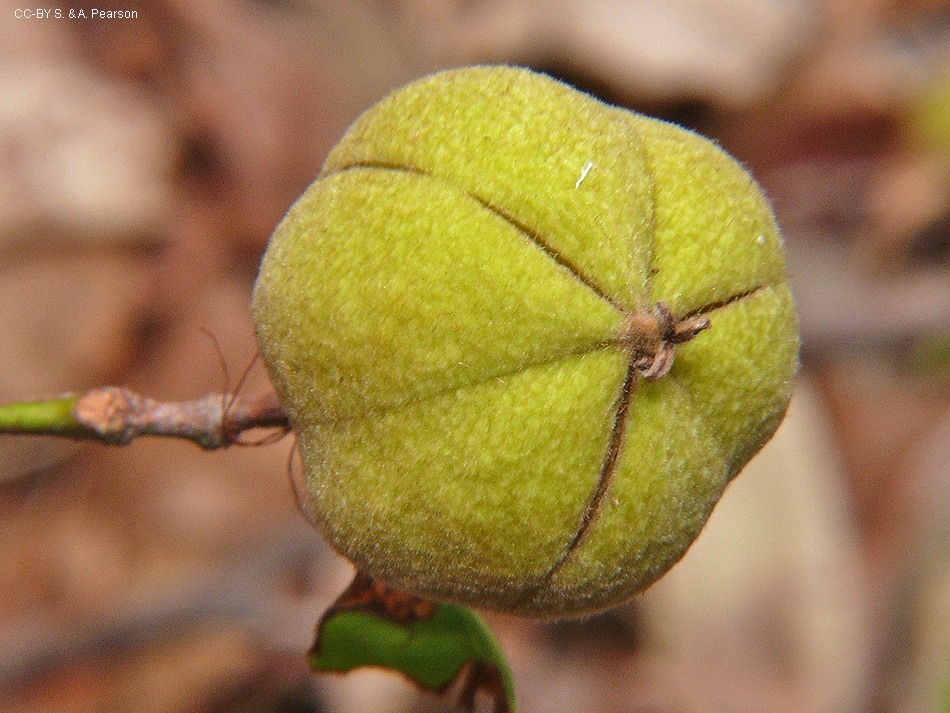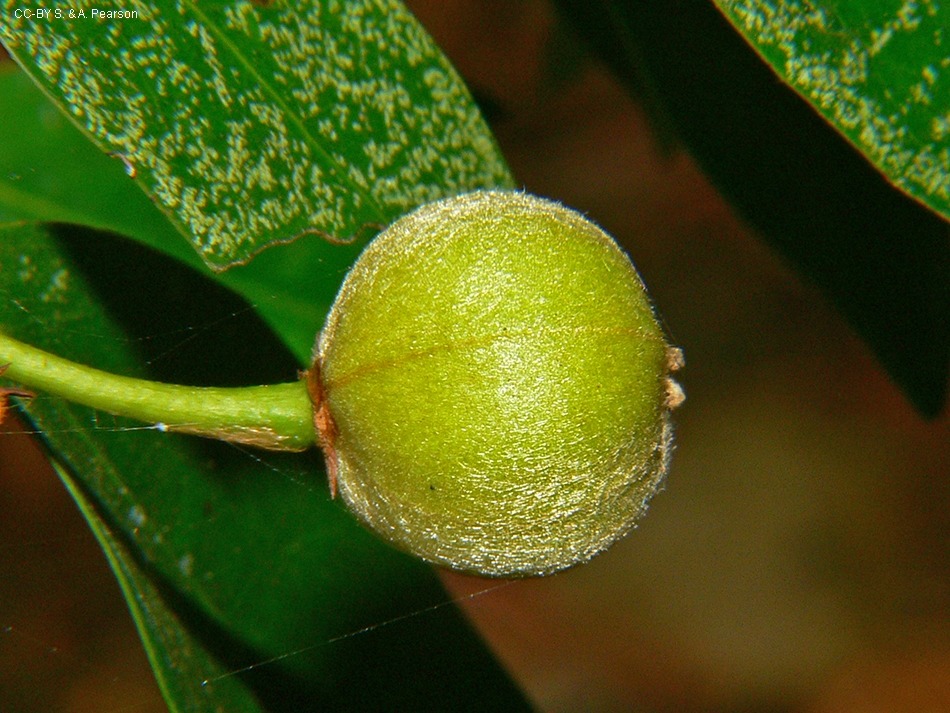Australian Tropical Rainforest Plants - Online edition
Dissiliaria indistincta P.I.Forst.





Forster, P.I. (1997), A taxonomic revision of Dissiliaria F.Muell. ex Baill. (Euphorbiaceae). Austrobaileya 5(1):17-19, Fig. 3, Map 2 Type: Queensland. North Kennedy District: Dryander Creek, left branch, base of Mt Dryander, 10 16'S, 148 34'E, 23 Feb 1994, P.I.Forster 14856 & A.R.Bean (holo: BRI [3 sheets + spirit]; iso: A, B, BISH, CANB, DNA, G, K, L, MEL, MO, NSW, P, QRS, SING, US).
Leaves simple and opposite or whorled. New foliage bright pink-brown. Stipules 1-1.3 mm long, 0.5-0.8 mm wide. Petiole 3-7 mm long, 1-2 mm wide, channelled on top. Leaf blades elliptic, oblanceolate, 3-13 cm long, 1-5.5 cm wide,, base cuneate to rounded, margin entire, apex acute to obtuse. Lateral veins weakly developed, 5-7 per side of midrib.
Inflorescences unisexual, axillary in distal axils or terminal. Male inflorescences more or less sessile clusters of 1-3 flowers. Male flowers on pedicels 9-21 mm long, flowers c. 6 mm in diameter. Tepals imbricate, 3 inner and 3 outer, broadly ovate to obovate to 3 mm long and to 3 mm wide. Stamens 16-18. Female inflorescence a solitary flower or often in pairs, on pedicels 10-30 mm long,. Tepals imbricate, 3 inner and 3(-4) outer lanceolate to lanceolate-ovate, the inner three often distinctly bigger than the outer 3, 1-5 mm long, 0.5-4 mm wide. Ovary subglobose with dense golden trichomes; disk annular to irregular cupular; styles 2.5-4 mm long, styles shortly connate and recurved.
Capsules without horns, subglobose, about 12-16 mm long, 13-18 mm diameter, minutely muriculate (rough with minute short, hard points). Seeds 5-9 mm long, shiny brown, caruncle small and insignificant.
Features not available.
This species may be distinguished from all other species by the very poorly developed lateral venation in the leaves where only the intramarginal veins are raised on the lower leaf surface.
1206





